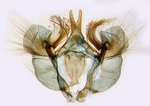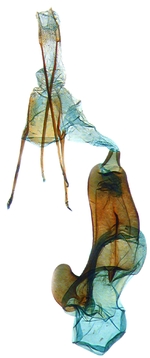
Male genitalia; North Carolina; J.B. Sullivan. |

Male genitalia; North Carolina; J.B. Sullivan. |

Aedeagus; North Carolina; J.B. Sullivan. |

Aedeagus; North Carolina; J.B. Sullivan. |

Female genitalia; North Carolina; J.B. Sullivan. |

Female genitalia; North Carolina; J.B. Sullivan. |

Male genitalia; Madison County; Jim Petranka. |